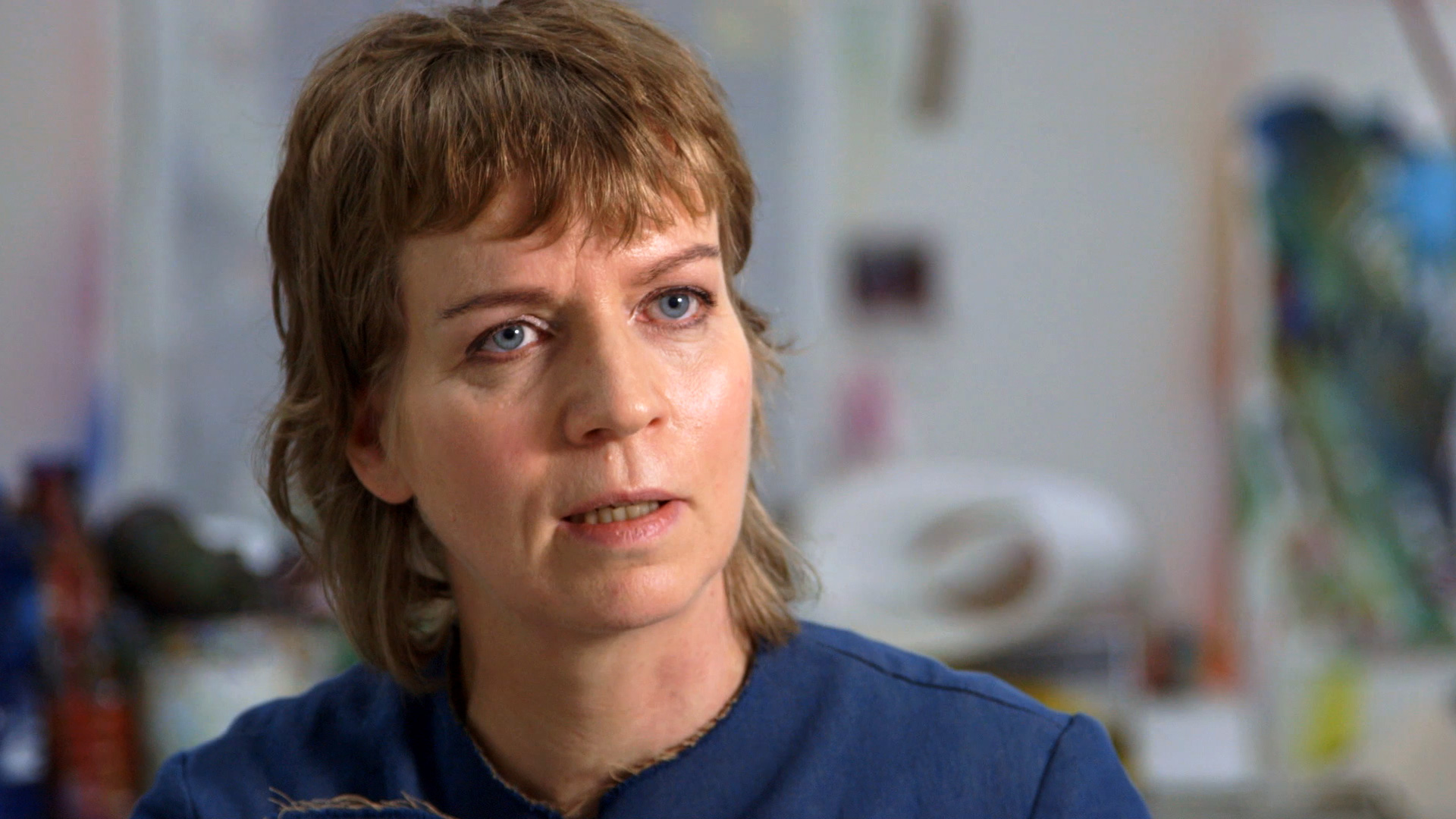
The Berlin-based artist Katharina Grosse does not take the conventional approach to painting.
If you’re imagining someone standing, pensively, in front of a blank canvas with a paintbrush and palette at hand—think again. Grosse is just as likely be found elbows-deep in raw pigments and strange three-dimensional materials, or armed with a spray-gun used to apply her fluorescent, otherworldly colors onto large-scale installations and paintings.
In an exclusive interview filmed at her Berlin-based studio for Art21, Grosse explains her relationship to color and form. Citing the standards of the 17th century art academy, where color was considered “the female, less stable, less clear, element of painting” and line was considered “the more male and progressive part of the work,” Grosse laughs.
L: Jackson Pollock, Mural (1943). © 2019 Pollock-Krasner Foundation, Artists Rights Society. R: Katharina Grosse, Untitled (2019) ARS.
It’s fitting then, that she was recently tapped by the Museum of Fine Arts in Boston to create a work that would be erected alongside and in dialogue with the almost 20-foot Mural (1943) by none other than Jackson Pollock, considered to be his greatest creation.
Grosse is never one to make concessions to the bounds of tradition. “I see very clearly that color is actually taking away the boundary of the object,” she declares. “There is no subject-object relationship anymore. I think maybe that’s what color has the potential to make us think.”
Watch the video, which originally appeared as part of Art21’s Art in the Twenty-First Century series, below. “Mural: Jackson Pollock | Katharina Grosse” is on view at the MFA Boston through February 23, 2020.
This is an installment of “Art on Video,” a collaboration between artnet News and Art21 that brings you clips of newsmaking artists. A new series of the nonprofit Art21’s flagship series Art in the Twenty-First Century is available now on PBS. Catch all episodes of other series like New York Close Up and Extended Play and learn about the organization’s educational programs at Art21.org.